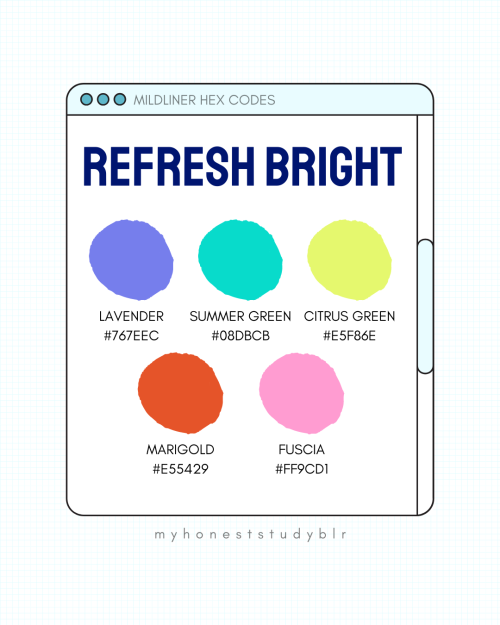Lokarprincipal - Conhecimento é Poder

More Posts from Lokarprincipal and Others






my masterpost | my studygram | ask me anything
[click images for high quality]
[transcript under the cut]
Other advice posts that may be of interest:
All About Procrastination
How To Study When You Really Don’t Want To
Common Study Mistakes
7 Strategies to Improve Concentration
How To Make Your Notes Aesthetic
Fofo demais
Creep. Very creep.
Siren Head Vs Eyeless Jack ( Creepypasta VS Trevor Henderson) | Minecraft Animation
Todos bons conselhos.
10 Ways to Simplify Life
1. Don’t try to read other peoples’ minds and don’t expect others to be able to read yours. Communicate if it is important to you.
2. Don’t expect to be friends with everyone. We all are different – and we all like different things. Instead, invest your time in a few good friends. That’s all you really need to feel happy and fulfilled.
3. Create a budget and live within your means. Accruing debt will only cause you to feel stressed.
4. Get rid of the monster of jealousy, and only compare yourself with yourself.
5. Organize your clutter and get rid of some stuff. It will leave you feeling calmer, and will save a lot of time.
6. Stay on the sidelines and don’t get drawn into pointless dramas in other peoples’ lives (unless it’s a crisis – and you know you ought to help).
7. Finish what you’ve started, and then do something else.
8. Treat every person you meet with respect, and err on the side of being patient and kind.
9. Accept there are things that you can’t change or control, and focus on those things that you can change or control.
10. Don’t be too proud to apologise. Admit that you were wrong, say you’re sorry, and move on.
Isso é tão verdade.
As a studyblr community can we stop pretending that we never
procrastinate
turn things in late
copy homework
cheat
get stressed
memorize information simply to pass a test
hate a subject/topic
dislike school
don’t do homework if we know it won’t be checked
don’t read the textbook
skip on making notes
don’t pay attention in class
get bad grades
skip schoolwork to hangout with friends
put school second
find ways around doing the homework
look for answers online
because you know what? we do. we’re not perfect, we mess up, we make mistakes. but that doesn’t make us any less of a person. you’re allowed to be imperfect.
Oh man!!!

Minha infância.

He-Man by Stjepan Sejic
Fofo. Muito fofo.
Hello I’d like head rubs too please 👋

Antenas, vale a pena estudar elas.
Best Partner for Wireless Modules: A Comprehensive Antenna Selection Guide
n the field of wireless communication, antenna selection is crucial. It not only affects the coverage range and transmission quality of signals but also directly relates to the overall performance of the system. Among various wireless modules, finding the right antenna can maximize their potential, ensuring stable and efficient data transmission.
When designing wireless transceiver devices for RF systems, antenna design and selection are essential components. A high-quality antenna system can ensure optimal communication distances. Typically, the size of antennas of the same type is proportional to the wavelength of the RF signal; as signal strength increases, the number of required antennas also grows.
Antennae can be categorized as internal or external based on their installation location. Internal antennas are installed within the device, while external antennas are mounted outside.
In situations where space is limited or there are multiple frequency bands, antenna design becomes more complex. External antennas are usually standard products, allowing users to simply select the required frequency band without needing additional tuning, making them convenient and easy to use.

What are the main types of antennas?
External Antennas: These antennas can be classified into omnidirectional antennas and directional antennas based on the radiation pattern.
Internal Antennas: These antennas refer to antennas that can be placed inside devices.
Omnidirectional Antennas: These antennas radiate signals uniformly in the horizontal plane, making them suitable for applications that require 360-degree coverage, such as home Wi-Fi routers and mobile devices.
Directional Antennas: These antennas have a high emission and reception strength in one or more specific directions, while the strength is minimal or zero in others. Directional antennas are primarily used to enhance signal strength and improve interference resistance.
PCB Antennas: These antennas are directly printed on the circuit board and are suitable for devices with limited space, commonly used in small wireless modules and IoT devices.
FPC Antennas: FPC antennas are flexible printed circuit antennas that are lightweight, efficient, and easy to integrate.
Concealed Antennas: Designed for aesthetic purposes, concealed antennas can be hidden within devices or disguised as other objects, making them suitable for applications where appearance is important without compromising signal quality.
Antenna Selection Guide
When selecting the appropriate antenna for a communication module, it's essential to first determine whether to use an internal or external antenna based on the module's structure.

External Antennas: These antennas offer high gain, are less affected by the environment, and can save development time, but they may take up space and impact the product's aesthetics.
Internal Antennas: These have relatively high gain and are installed within the device, maintaining a clean and appealing exterior.
Sucker Antennas: These provide high gain and are easy to install and secure.
Copper Rod Sucker Antennas: Made from large-diameter pure copper radiators, these are highly efficient with a wide bandwidth.
Rubber Rod Antennas: Offer moderate gain at a low cost.
Fiberglass Antennas: Suitable for harsh environments and ideal for long-distance signal

External Directional Antennas
Typically used in environments with long communication distances, small signal coverage areas, and high target density.
Panel Antennas have high efficiency, are compact, and easy to install, while considering the impact of gain and radiation area Yagi Antennas offer very high gain, are slightly larger, and have strong directionality, making them suitable for long-distance signal transmission; however, attention must be paid to the antenna's orientation during use
Internal Antenna Selection
Most internal antennas are affected by environmental factors and may require custom design or impedance matching
Spring Antennas are cost-effective but have low gain and narrow bandwidth, often requiring tuning for good matching when installed Ceramic Patch Antennas occupy minimal space and perform well, but have a narrow bandwidth
For details, please click:https://www.nicerf.com/products/ Or click:https://nicerf.en.alibaba.com/productlist.html?spm=a2700.shop_index.88.4.1fec2b006JKUsd For consultation, please contact NiceRF (Email: sales@nicerf.com).
Que belo.

source
-
 itsacoffeemug liked this · 1 month ago
itsacoffeemug liked this · 1 month ago -
 mcwhacko liked this · 5 months ago
mcwhacko liked this · 5 months ago -
 panjackdaw liked this · 6 months ago
panjackdaw liked this · 6 months ago -
 aryaraju liked this · 6 months ago
aryaraju liked this · 6 months ago -
 the-sleepy-student liked this · 6 months ago
the-sleepy-student liked this · 6 months ago -
 maevegreen liked this · 6 months ago
maevegreen liked this · 6 months ago -
 lokarprincipal reblogged this · 6 months ago
lokarprincipal reblogged this · 6 months ago -
 lokarprincipal liked this · 6 months ago
lokarprincipal liked this · 6 months ago -
 dreamspp11 liked this · 6 months ago
dreamspp11 liked this · 6 months ago -
 king-toad liked this · 6 months ago
king-toad liked this · 6 months ago -
 languageboutique reblogged this · 6 months ago
languageboutique reblogged this · 6 months ago